After a 12-year gap, the 1948 London Olympics was the first Summer Olympics held since the 1936 Games in Berlin.
Less than three years after the end of the Second World War, Britain’s economic climate was poor, and food and clothing were still being rationed. Also, due to their role in the war, Germany and Japan were not invited to participate. Thus the 1948 Olympics became known as the ’Austerity Games’. No new sports venues were built, and athletes were housed in existing accommodation.
This was the second time that London hosted the Olympics, the first being in 1908. When the Games returned to London in 2012, it became the only city to have had the honour of hosting the Olympics three times.
The 1948 Olympics were the first to be broadcast on television.
These 40 photographs of the 1948 Olympics in London are taken from the photographic archive of the Daily Herald newspaper, and are a wonderful example of sports photojournalism in our collection.
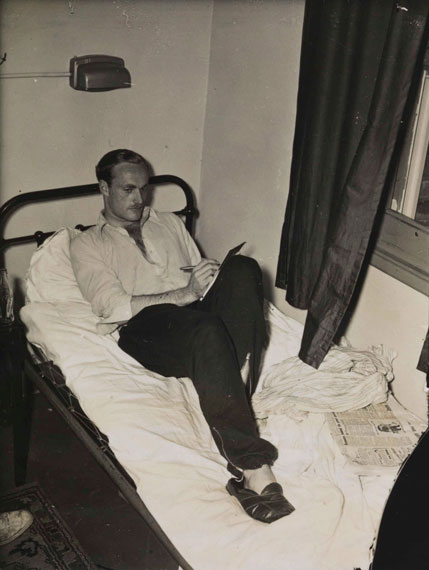
Alistair McCorquodale, who finished 4th in the 100m final, photographed taking it easy in one of the Olympic Villages. McCorquodale narrowly lost the Bronze in a photo finish in the 100m event, but did win silver in the 4x100m relay. He never ran again after the Olympics, but went on to represent the MCC and Middlesex County Cricket club.
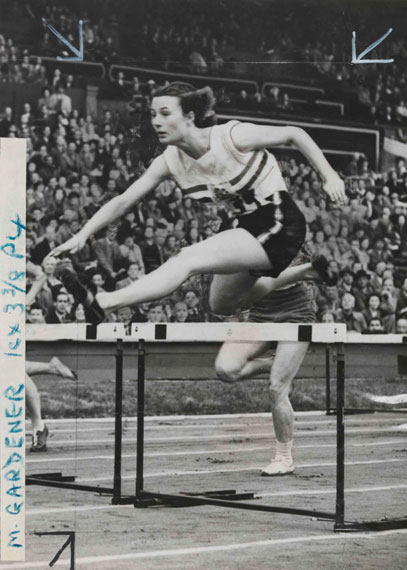
Maureen Gardner (1928–1974) won the silver medal in the 80m Hurdles event at the 1948 Olympics. She narrowly lost out to Fanny Blankers-Koen of the Netherlands by 0.05 seconds.
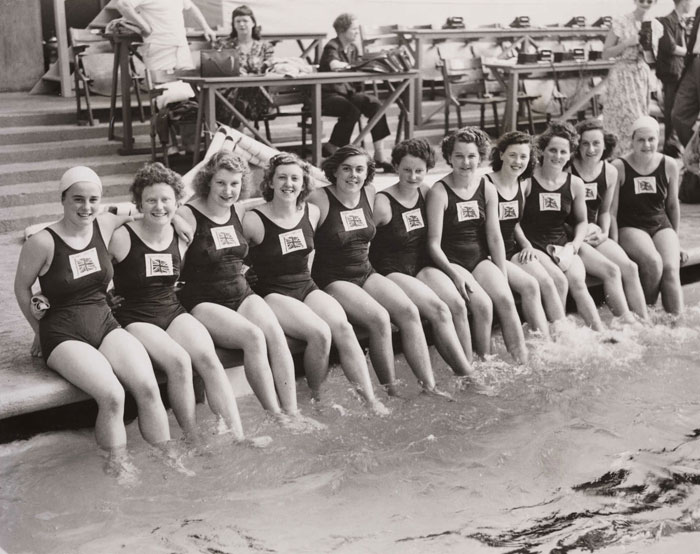
Members of the British Women’s Olympic Swimming team kept cool in the best manner possible on the day before the official opening of the Olympic Games.

Cathie Gibson was born in 1931 in Motherwell, and was inducted into the Scottish Sports Hall of Fame in 2008. She won bronze in the 400m Freestyle at the 1948 Olympics.
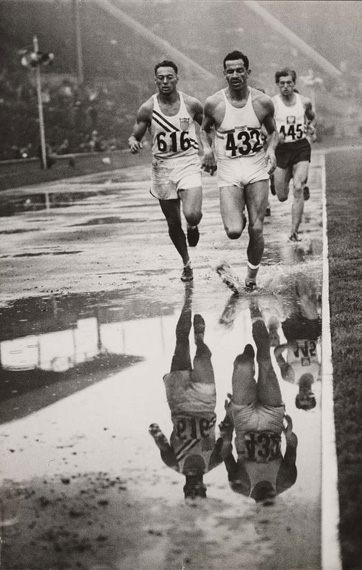
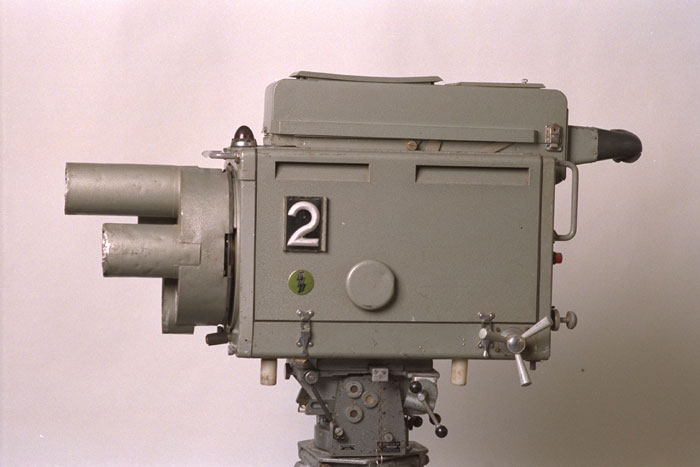
The first post-war British television camera was the CPS Emitron. First used for the 1948 Olympic Games in London, this camera continued in service until the late 1950s. The example here, shown with its control equipment, dates from 1950 and has a different design of casing to the first production models.
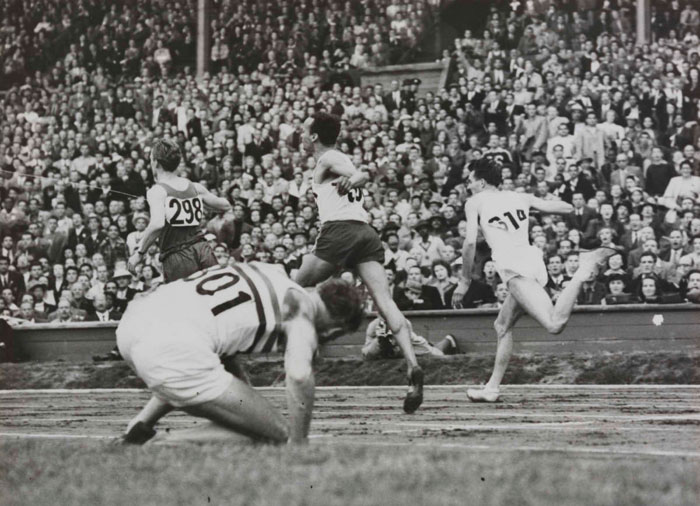
Don Finlay (1909–1970) fell at the winning post after leading at the last hurdle. Finlay was the British Team Captain for the 1948 Olympics and was chosen to take the Olympic Oath.
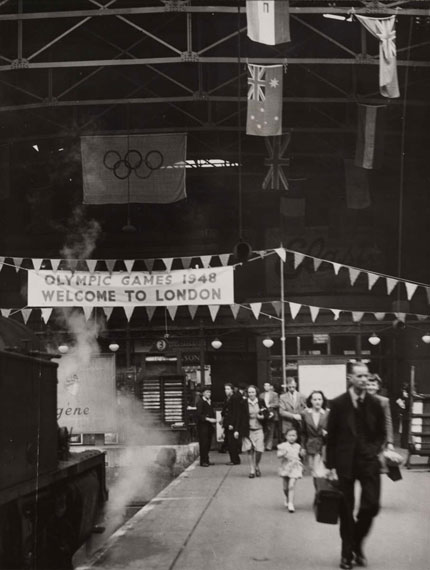
Fenchurch Street was the station used by the majority of overseas visitors arriving at Tilbury Docks, London.
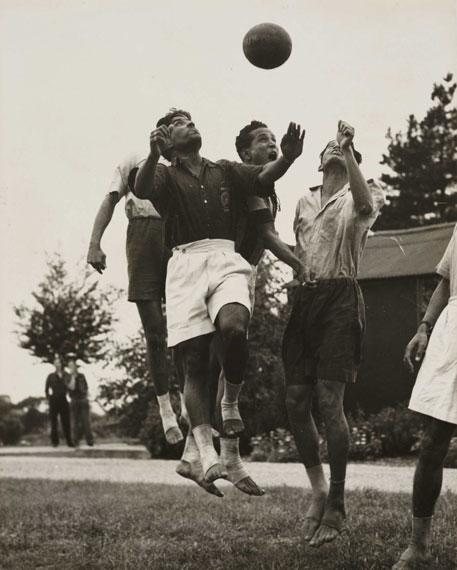
The Indian football team training in Richmond Park Olympic Camp. They proposed to play bare-footed if the weather was dry enough.
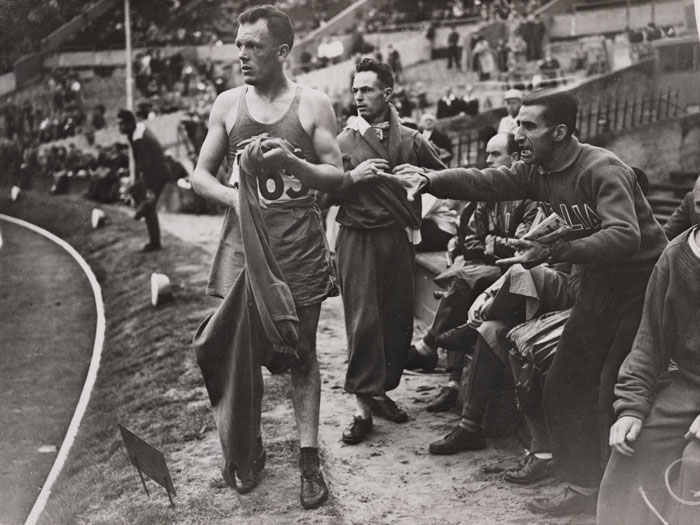
Italian and French Olympic competitors shout in protest as Louis Chevalier of France is disqualified during heat two of the 10km walk held at Wembley.

Harrison Dillard (b. 1923) is one of only two men to win Olympic titles in both sprinting and hurdling. While he failed to qualify for the 110m Hurdles in the 1948 Olympics, Dillard went on to qualify for the 110m Hurdles at the 1952 Games in Helsinki, and won gold.

The Olympic flame arrives at Wembley Stadium, carried by English athlete John Mark (1925–1991), a medical student.

Demonstration game of Lacrosse at the 1948 Olympics. Rensselaer (USA) v. All England.
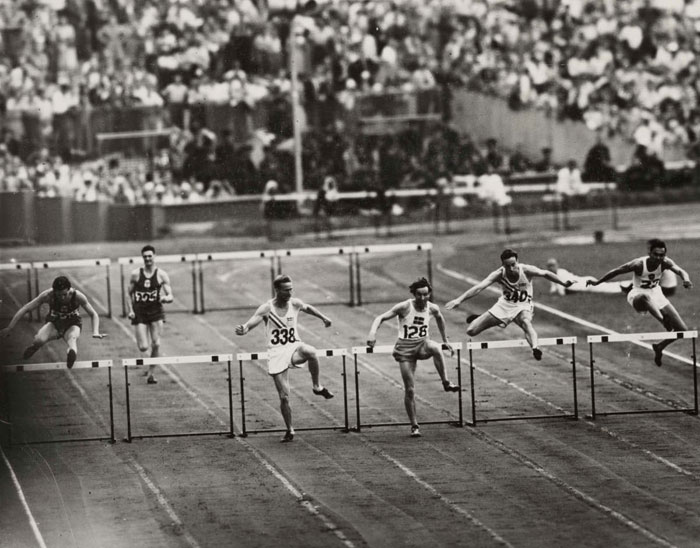
This photograph shows Carl Rune Larsson of Sweden (1924–2016) winning a 400m Hurdles heat. He went on to win bronze in the event finals. Larsson also ran with Kurt Lundquist, Lars Wolfbrandt and Folke Alvevik in the 4x400m Relay, where the Swedes won bronze.
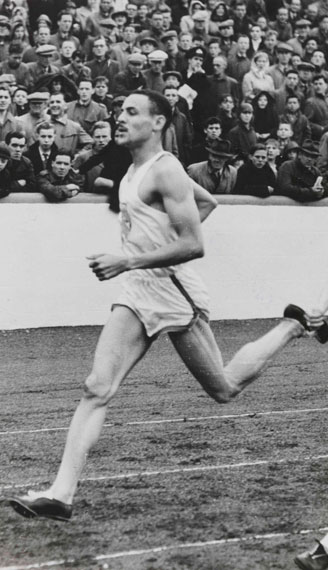
‘Marvelous’ Mal Whitfield (1924–2015) won Gold in the 800m event and in the 4x400m Relay at the 1948 Olympics. He served in the United States Air Force during the Korean War. Whitfield was the first black athlete to win the James E. Sullivan Award in 1954 for outstanding amateur athletics. He trained numerous athletes over the years and arranged sports scholarships for over 5,000 African athletes to study in the US.

A Swiss longboat passing under Hungerford Bridge, approaching Charing Cross Pier, on 28 July 1948. The Swiss longboat arrived via Rotterdam from Basle with the Olympic Flag.
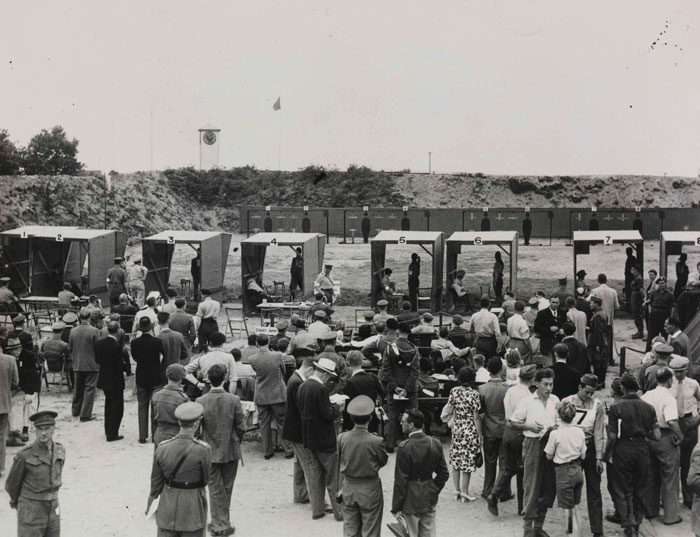
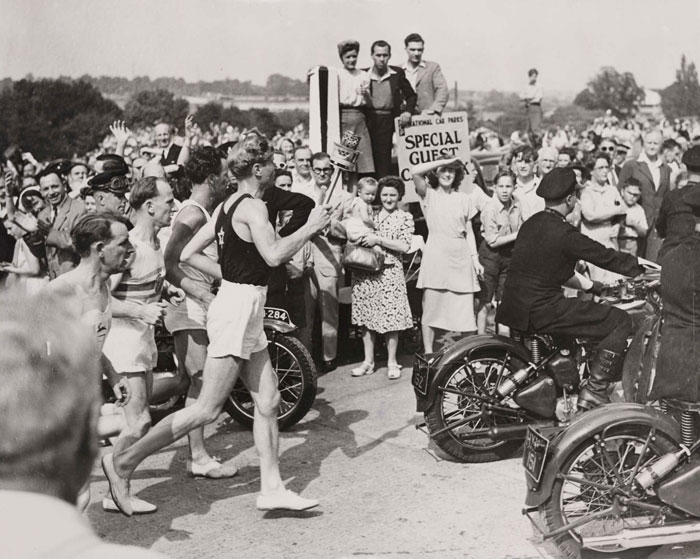

The Olympic torch, brought by the destroyer ‘Bicester’, at Prince of Wales Dock on its way to Wembley. This photograph shows Chief Petty Officer Herbert Barnes lighting the torch aboard the destroyer.
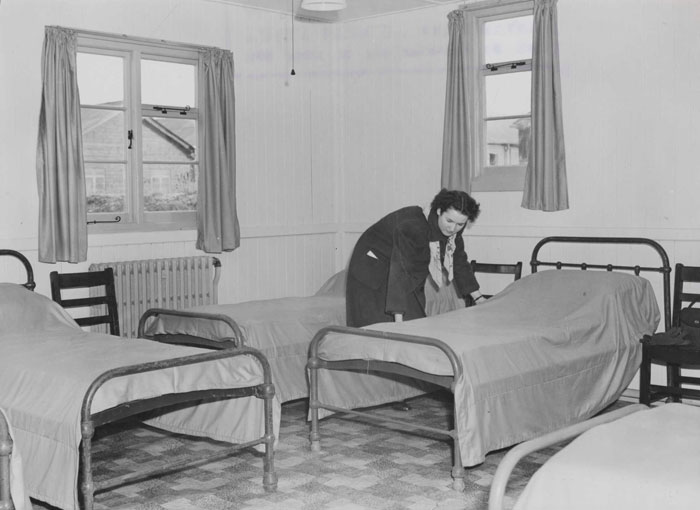
An interior of one of the finished huts which housed eight entrants. The male athletes were put up separately from the women, mainly at a number of military camps: two RAF camps (Uxbridge and West Drayton) and an RAF camp used as a hospital in Richmond. Athletes were also put up at schools and three Greater London colleges.

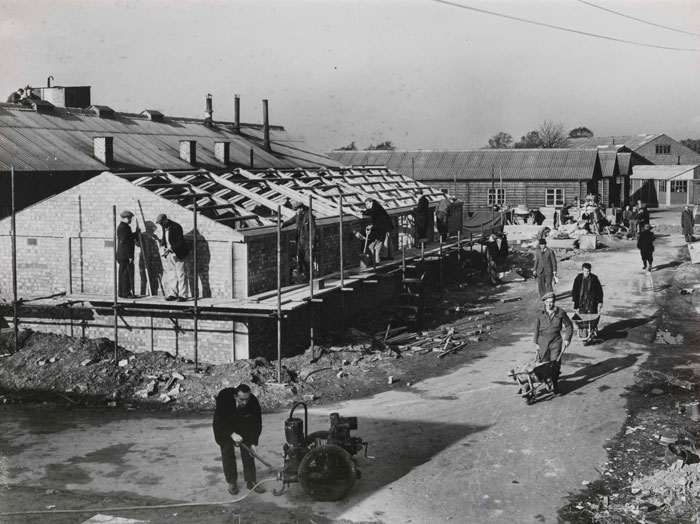
Work in progress at Richmond Park on the largest of the camps which housed competitors at the 1948 Olympics. Formerly an Army convalescent camp, it provided accommodation for 1,700 people. All the social needs of the competitors were catered for with writing rooms, cinemas, milk bar and a café. This photograph shows one of the cookhouses.

Reg Harris is greeted by some of the Danish cycle team while training at Herne Hill.
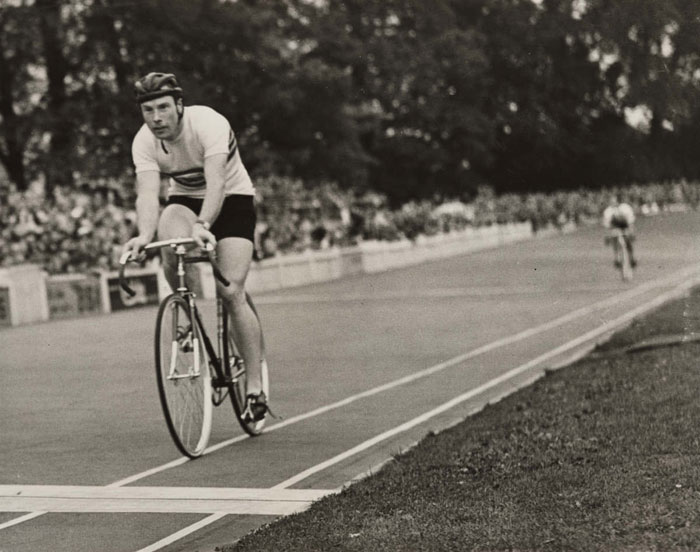
Reg Harris (1920–1992) was a Lancashire-born cyclist who won two silver medals at the 1948 Olympics. In 1974 he staged a late comeback, winning a British cycling title at the age of 54.
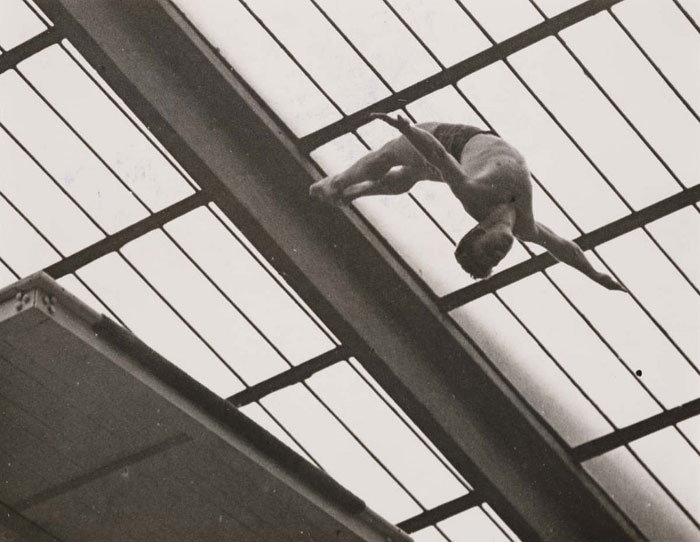
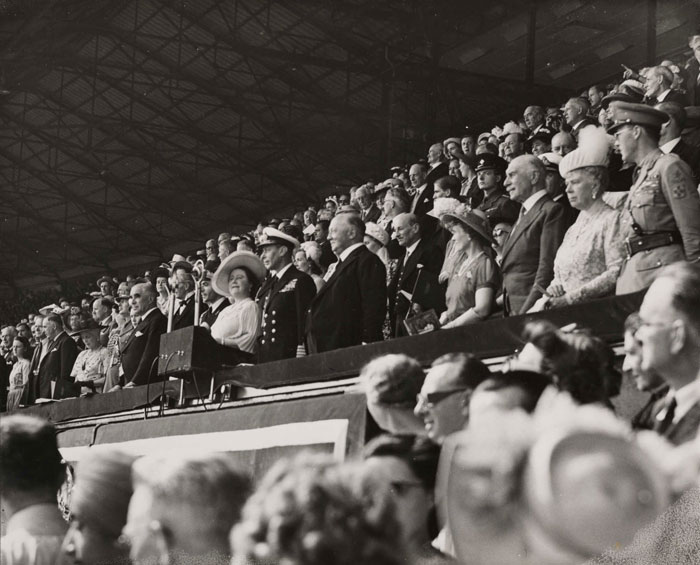
His Majesty King George VI opened the 1948 Olympics with a speech, which was followed by the entry of the torch-bearer. This photograph shows the royal party in a box at Wembley Stadium. From left to right: Prince Bernhard; Queen Mary; the Earl of Athlone; the Duchess of Gloucester; Mr Atlee; Mr Sigfrid Edstrom; The King; The Queen; the Shah of Persia; Sir Frederick Wells; Princess Margaret; the Duke of Gloucester; Lady Athlone.
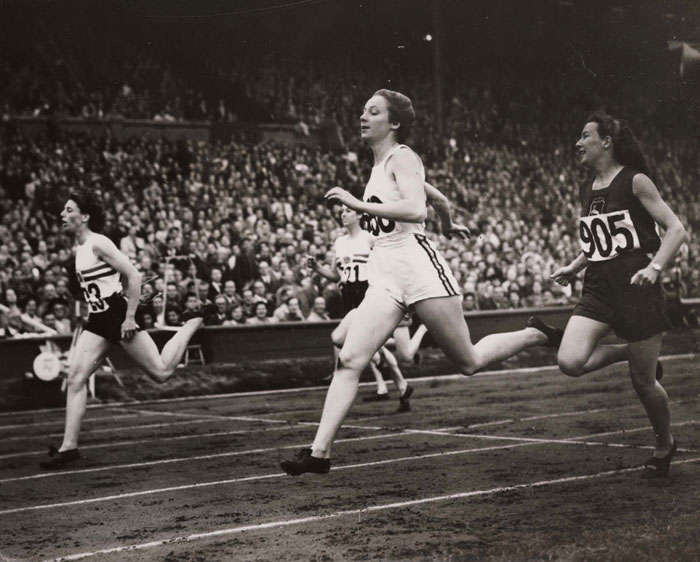
The first dead heat of the 1948 Olympic Games occurred in the Women’s 200m semi-final when Shirley Strickland of Australia tied for first place with Audrey Williamson. Daphne Robb of South Africa was placed third. Williamson went on to take silver in the final behind the Dutch competitor Fanny Blankers-Koen, who broke the Olympic record for the event.
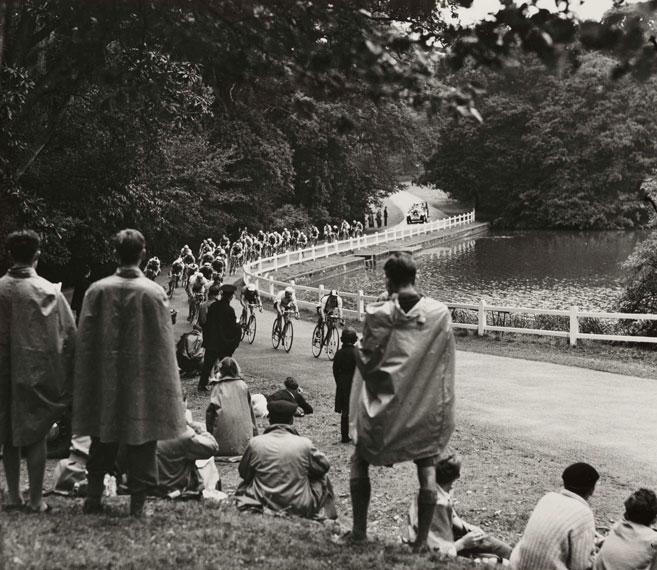
The Olympic Cycle Road Race. The eventual winners of this race were the Belgian team, with Great Britain second and France third.

The above photograph shows the stand for the Olympic torch being erected in readiness for the opening of the 1948 Olympics on 29 July.
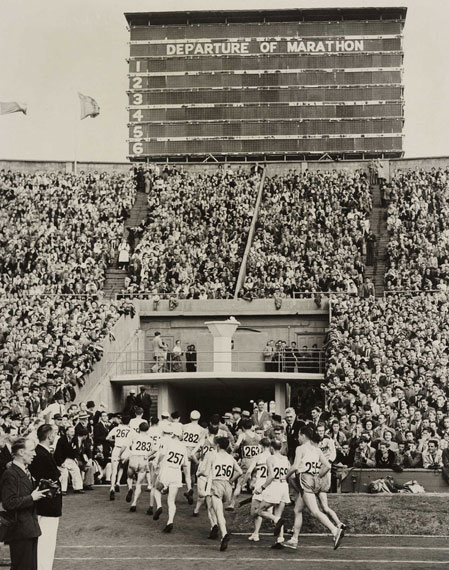
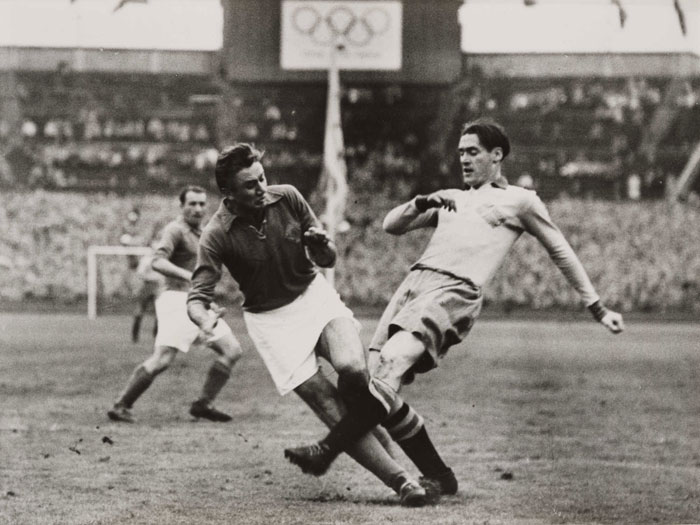
Liedholm of Sweden getting tied in a knot with Brozovic of Yugoslavia during the Olympic final at Wembley. Sweden were the eventual victors, winning 3–1.

Known as ‘The Gentle Giant’, Arthur Wint (1920–1992) recorded an Olympic record for the 400m in 1948 and was the first Jamaican to win an Olympic gold. In 1942 Wint joined the British Commonwealth Air Training Plan and was sent to Britain for active combat during World War II. He left the RAF in 1947 to attend St. Bartholomew’s Hospital as a medical student before returning to his homeland as a doctor.

The Olympic Creed is shown on the scoreboard. It reads:
The important thing in the Olympic Games is not winning but taking part. The essential thing in life is not conquering but fighting well.
This message has been displayed at every opening ceremony since 1932.
The quote is usually attributed to Baron de Coubertin, the founder of the modern Olympic Games, but it is actually based on words used in a sermon by the Bishop of Central Pennsylvania, Ethelbert Talbot, given in St Paul’s Cathedral in July 1908.
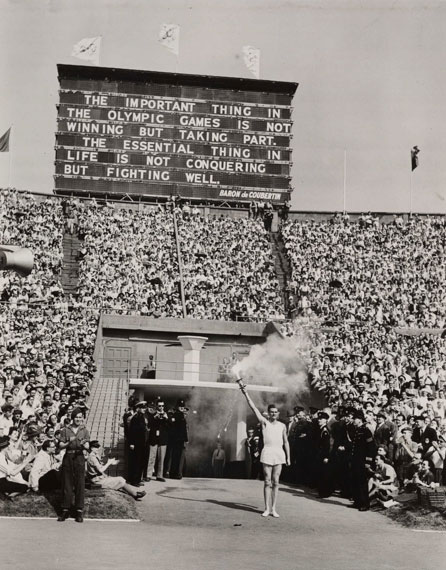
The torch bearer, John Mark—the last of the runners bringing the Olympic flame from Greece—arriving at Wembley Stadium for the opening ceremony.

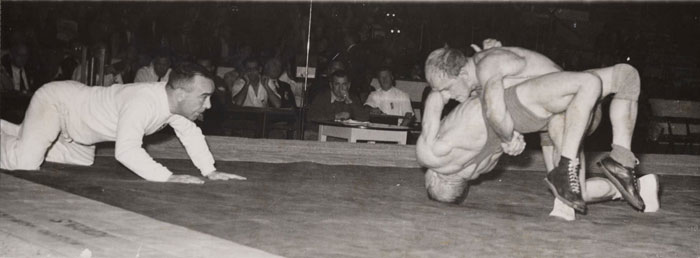
Anderberg of Sweden wins by a fall over Toth of Hungary in the Featherweight event of the Olympic Wrestling event at Earls Court.
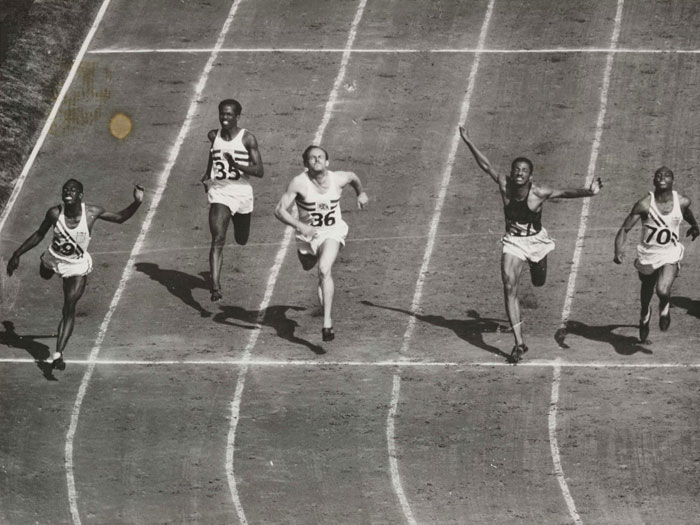
The 1948 Olympics 100 metres final at Wembley Stadium, with Harrison Dillard of the USA winning in 10.3 seconds. This equaled the previous best Olympic performances of Eddie Tolan in 1932 and Jessie Owens in 1936.
The 2012 Olympic Games were broadcast in Super Hi-Vision: this museum, in partnership with the BBC, was one of only six places in the world where audiences were able to experience a live broadcast using this new technology.
Do you have fotos of the basketball chilean team hope shiwing Rolando Hammer Casadio (my father)
Please comment back
Thank you
Rolando hammer
Hi my name is Winston Vaughan I am looking for old photo of Chalkhill Estate at Wembley Park do you have any pictures from the 1920s to 1999 please?
Kind regards
Winston
Would love to see any photos of the Brazilian basketball team, if anyone has any! Thanks so much, Glen
The photo of the cycle race it looks like it was taken in Windsor Great Park at 51.41623° N, 0.61135° W